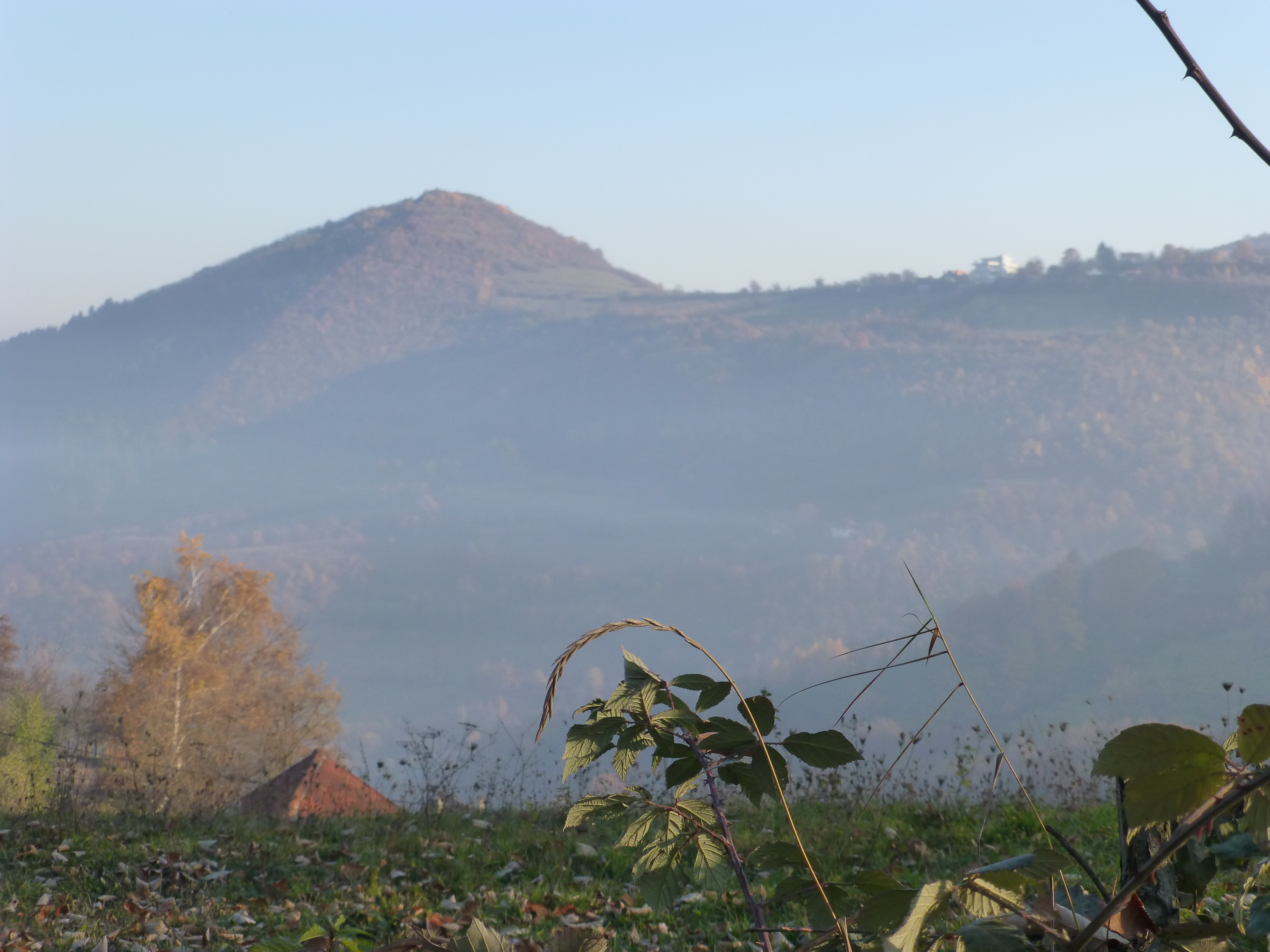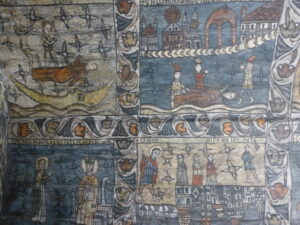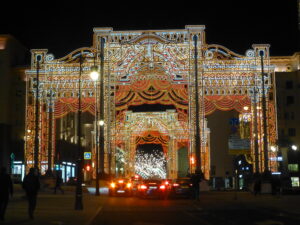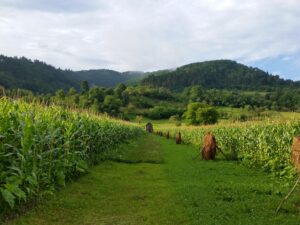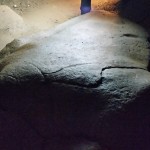
“Put your hands out,” the archeologist encouraged us. “And stretch your fingers over the megalith and feel the vibrations.” We tried, and kept trying, but our fingers weren’t quite feeling the vibrations so much as the cold air flowing through the tunnel we were in.
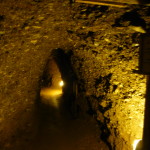
It was a fitting way to finish our visit to the adjacent “Bosnian Pyramids,” an array of hills in the lovely Visoko valley that might – or might not – be man-made pyramids. The tunnels we had been exploring were – or were not – an extensive network of passages leading to those pyramids.
We learned about all this from a well-traveled Dubrovnik man on our trip there. He recommended we come to Visoko partly to check out the pyramids for ourselves, but also to enjoy more of the extraordinary countryside of Bosnia and Hercegovina (BiH).
Indeed, by the time we reached Visoko, we had already come to appreciate the dazzling beauty of the mountainous terrain in BiH, especially during a colorful fall season.
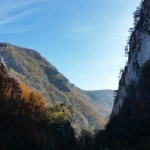
Everywhere we drove out of Sarajevo, our home base, we passed through steep canyons sliced by bubbling rivers.
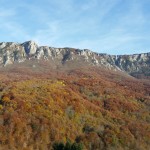
East toward Foca, after hours of driving through several canyons, we found a sprawling Sutjeska National Park, a dramatic set of barren peaks adorned by rainbow-tinted forest land.
We hiked nearby ski slopes used for the 1984 Sarajevo Winter Olympics; the exhilarating vistas were dotted with villages nestling amid fir-covered mountains and valleys for grazing.
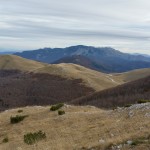
A drive northeast to Visegrad took us high above a valley filled with fog, looking more like islands off the Dalmatian coast, and then through dozens of mountain tunnels past unusual limestone formations rising over the river valley.
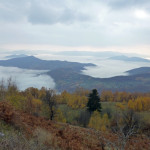
Later in our trip, in the vicinity of Mostar and Jajce, we passed thru more stunning canyons with whitewater potential during the season. South and east of Mostar, on the way to the coast, huge large high plains opened up, ringed with mountains to admire from below, or divert the eye from above.
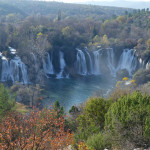
Almost hidden nearby Mostar is a stunning horseshoe of waterfalls at Kravice. History and beauty compete further to the east. We wandered the lovely milltown of medieval Stolac nestled amid its hills.
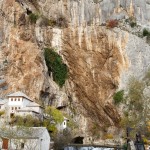
An ancient Dervish Tekija in Blagaj, or worship house, positioned above a cave entrance at the massive rock wall ending another canyon, added a mystic religious quality to yet another beautiful riverway.
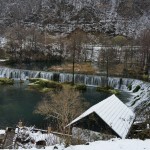
More waterfalls and lakes adorned the old fortress town of Jajce, former capital of the Bosnian kings, where we arrived as it started to snow.
But Visoko, just a short drive northwest from Sarajevo, offered the most unusual story as well as a charming landscape.
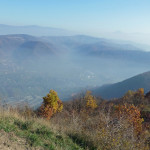
Semir (Sam) Osmanagic, an amateur archaeologist from BiH, started exploring here in the mid-2000s. He claimed that the four pyramidal mountains in Visoko were not natural at all. Some race of early men – or perhaps, just perhaps, strangers from somewhere else in the universe – constructed them intentionally tens of thousands of years ago. They even oriented these pyramids – Sun, Moon, Dragon, Love, Earth – astrologically.

What makes the discovery dubious is the lack of historical evidence of the skill needed to create these. At 220meters above the valley floor, the Pyramid of the Sun is even taller than the largest Egyptian pyramid. Unlike the Mayan or Egyptian pyramids, moreover, they don’t stand on their own, but are attached to the sides of other hills. They do look pretty much like forested mountains, though in Mexico tropical forest had overrun the Mayan pyramids before they were rediscovered.
Since Sam’s discoveries, plenty of ink and electrons have been devoted to claims on one side and debunking on the other. Scientists of all sorts have come to do measurements; volunteers have helped dig and dig for evidence. Archeologists have pontificated on the controversy, mostly doubtful of Sam’s claims. Yet, it seems, diggers have found large formed blocks toward the base of the Sun pyramid, perhaps the construction technique. And other supposed evidence has emerged, such as the tunnels, yet to be explained away.
Even after our trip there, we can hardly weigh in on the controversy. Our visit was quite disorienting as thick fog shrouded the hills around the valley. We couldn’t figure out at first where to go or how to proceed. Eventually we did find our way up the Pyramid of the Sun and climbed to the top. With the fog lifting a bit, our broad perch was exhilarating. But we still couldn’t discern much, not even which hills were supposed to be the pyramids. A couple did have sides that roughly appeared flat like a tetrahedron, coming together in a visible line. But that’s the most we could say about them.
Atop the Sun pyramid everything seemed, well, natural, except for the modest remains of a fortified old city whose medieval origins were well agreed upon.
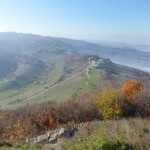
Still a lot of people believe the pyramids and tunnels were crafted by people rather than nature. And the local villagers have tried to make the most of the tourist potential. Guides hang about the access points, ready to show you around and present what evidence there is. On the saddle below the top of the Sun pyramid, several inns have sprung up, with owners hawking chunks of rock and crystal, as if they were saintly relics. A boutique hotel with about a dozen rooms has recently opened; another one was under construction.
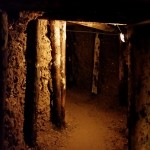
And then there is that network of tunnels, a magnet for the curious and particularly for those still in touch with their inner new age consciousness. Sam and his crew have already excavated a small portion of the tunnels and continue to explore them. At the Ravne entrance, the local villagers have set up over a dozen souvenir shops along the rough road. We avoided them, then found the ticket tent with the help of one man standing nearby, who turned out to be our guide through the tunnels.

On a map, our guide showed us where the known tunnels were and their position relative to the pyramids, a distance we actually knew since we had spent a few hours walking the area between Ravne and the Sun pyramid. We donned hard hats, he put on his bicycle helmet, and we started in. Knowledgeable and garrulous, the guide shared his awe at the seemingly limitless network. As he noted, the tunnels appear to have been carved originally out of the composite rock beneath the ground, with an endless number of side tunnels marked by piles of stones at their mouths and then mostly filled in with softer dirt at some later time.
Our guide related the scientific evidence about the strange, mystic qualities of the tunnels: the intensity of negative ions, the uniform quality of the oxygen flow throughout. He hinted at the great healing powers that flowed there, and noted the many visitors who come here to absorb these powers. He discoursed breathlessly about the smooth ceramic oblongs that had been unearthed at certain junctions in the tunnels. These “megaliths” weighed up to eight tons, and were inscribed, it seemed, with runic writing which might have acted as directional signs and instructions.
When he brought us to a tunnel juncture where the second largest of these megaliths sat, we found a group huddled around it. One of them was translating into German the English words of a man who was dressed like Indiana Jones, complete with the hat. Wondrously, he turned out to be the main man, the controversial archeologist Sam Osmanagic!
The German group listened raptly to the translator, as Sam continued to discourse at length. He generally made his case for his findings. He spoke wonderingly about the special qualities of the tunnels, how they form a network channeling energy to the pyramid, like a great transmitter. He mused about the people – or, he hinted, the beings from elsewhere – who created these tunnels and the pyramids themselves, and on why they might have filled in the tunnels. He disclosed how one man recently spent a short time at the tunnels, and found both his high blood pressure and diabetes relieved for months…until normal life eroded the effects. He then prompted us to feel the good vibrations emitting from the megalith – with little success.
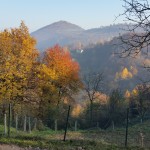
His testimony was seconded by an artist friend from Romania. He amplified on the spiritual emissions within the tunnels, and disclosed that once he had seen several bluish figures gather around the largest megalith.
Whatever the truth about the tunnels and pyramids, people will come. Whether all this was formed by nature, by interstellar aliens, or by some earlier human community with advanced technology – tourists who are curious or perhaps better tuned into the vibrations, ions and mystic qualities will come to this field of dreams in Visoko. Whatever they find here, they will surely also find in the rest of Bosnia and Hercegovina a country whose beauty has its own mystical appeal.
(Also, for more pictures from Croatia & BiH, CLICK HERE to view the slideshow at the end of the Croatia & BiH itinerary page.)


